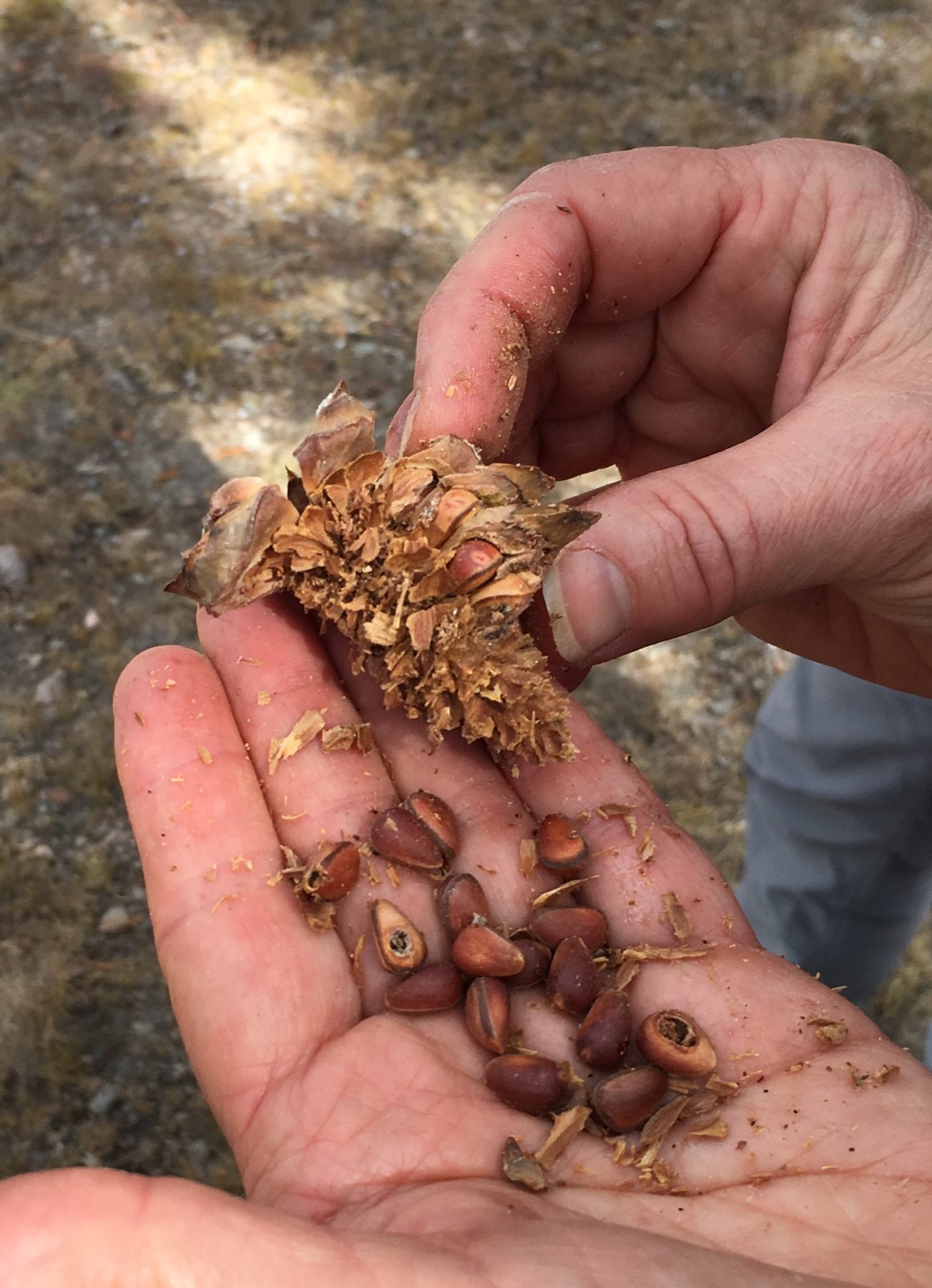
Seedling Request
Dr. Danielle Ulrich is a new faculty member and plant physiological ecologist in the Ecology department at Montana State University in Bozeman, Montana. Dr. Ulrich would like to focus her research program on whitebark pine (Pinus albicaulis) ecophysiological responses to environmental stress.
The impact of climate change on whitebark pine ecosystems is uncertain, largely due to our lack of understanding of whitebark pine physiological responses to environmental stress. Our research goal is to investigate ecophysiological mechanisms that drive whitebark pine seedling survival, mortality, and growth. We aim to compare and contrast physiological stress responses among rust-resistant and rust-susceptible populations, populations from contrasting climates (e.g. elevation, temperature, precipitation, aspect, slope), and populations from contrasting geographic regions/seed zones (e.g. Northwest MT/Crown of the Continent vs southeast end of PIAL range/Greater Yellowstone Ecosystem). We will use lab, greenhouse, and common garden studies to quantify heat and drought stress resistances and monitor physiological impacts and recovery in response to imposed heat and drought stresses. We focus on growth and water, carbon, and nutrient dynamics. Depending on material availability, we will examine other environmental factors including: soil type, light/shade, elevated CO2, wildfire, and nutrients. Also depending on material availability, we will set up a reciprocal transplant study along an environmental stress gradient to quantify the relative contributions of phenotypic plasticity and genotypic variation to the expression of physiological traits driving seedling survival, mortality, and growth. Together, this work will establish a physiological foundation to inform field research, vegetation modeling, and conservation efforts.
Material requested
- Seedlings (1-5 years old): ideally 20-100 seedlings per population
- Seeds (if available): ideally >100 seeds per population
Species
- Whitebark pine
- Limber pine
- Subalpine fir
- Engelmann spruce
Populations (of PIAL and other species if available)
- Rust-resistant
- Rust-susceptible
- Northwest MT (Crown of the Continent)
- Southeast end of PIAL range (GYE)
- Any populations from contrasting climates (i.e. elevation, precipitation, temperature, aspect, slope)
Special request: If any populations are being outplanted, it would be ideal to acquire seedling material from populations that will be planted in contrasting regions or climates for comparative studies between greenhouse and field, and potential follow up physiological studies in the field.

